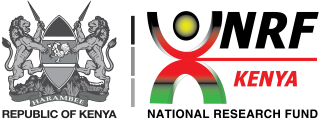Publication: Spatial variation in diversity, distribution, and abundance of macroinvertebrates and their response to physicochemical param- eters in River Nyakomisaro, kisii-Kenya
No Thumbnail Available
Date
2020-02-20
Journal Title
Journal ISSN
Volume Title
Funder
Kenya Marine and Fisheries Research Institute Kegati Station
Publisher
IJTHF
Cite this Item
Abstract
Aquatic animal and plant diversity of tropical aquatic ecosystems are severely threatened by frequent anthropogenic activities. The study investigated spatial variation in macroinvertebrate community and physicochemical parameters of River Nyakomisaro from July to December 2016. Five sampling sites were selected and a pool, a rie and a run identied in each site for sampling. Kick sampling was employed in collecting macroinvertebrate samples while selected physicochemical parameters were determined in situ using a water quality multi-parameter meter model 85–15 ft YS1. A total of 6,104 macroinvertebrates belonging to 30 genera, 22 families and 10 orders were recorded. The highest diversity (2.719 ± 0.018) was recorded in station 1 while station 5 had the lowest diversity (1.229 ± 0.026). The highest abundance was recorded in station 5 with 1,948 macroinvertebrates dominated by Chironomids which are highly tolerant to perturbations while station 1 recorded the lowest abundance of 473 macroinvertebrates and dominated by macroinvertebrate communities that are sensitive to environmental pollution. Analysis of variance (ANOVA) showed signicant dierences (p<0.05) in diversity, abundance, and distribution of macroinvertebrates of River Nyakomisaro. Headwater stations had taxa that thrive in undisturbed waters with a reduction of genera that are sensitive to perturbations such as Ephemeroptera, Plecoptera, and Trichoptera in downstream stations. This was a clear indication of pollution of the waters downstream. This response makes macroinvertebrate communities in River Nyakomisaro good bio-indicators of water quality. Therefore, the ndings of the current study can form a basis for the establishment of strategies for conservation, protection, and restoration of macroinvertebrates and the integrity of river Nyakomisar
Description
Keywords
Kisii University,
